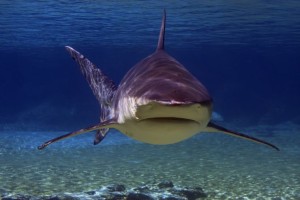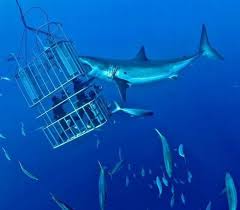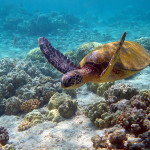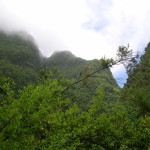photo credit www.govisitcostarica.com
Saturday morning, 8:30am. I am 25m down in the Pacific Ocean of the coast of the Guanacaste region of Costa Rica, next to a wave-rocked promontory they call ‘Isla de Murcielogos’, or ‘bats island’. The diving guide, an seasoned veteran known as Javier, raises his hand and signals to me by placing the palm of his hand straight up on the top of his head. His meaning is unmistakeable – shark.
Around the corner swims a beefy bull shark, his grey flanks rippling with muscle and his bunched mouth bursting with razor sharp teeth. He doesn’t seem to be much interested in us, however, he seems to be taking a stroll around the island. The thrill for us is a powerful one, and although we can’t talk to each other underwater, you can see feel the excitement in the quickening of our fins and in the widening of our eyes.
Diving with sharks on their own terms can be a powerful experience, and you can feel the majesty of their powerful domination over the saltwater aquatic ecosystems of this earth while reminding yourself that as long as you are not their natural prey you should be in little danger.
However there is another kind of diving with sharks that I object to. This is the kind where a thrill seeking tourist gets in a cage, and then all kinds of bloody lumps of meat are hung outside to attract the big predator sharks such as the great whites Carcharodon carcharias. Tourists then enjoy the sight of the sharks feeding next to them, beating against the sides of the cage even in a frenzy of bloodlust.
photo credit (www.travelsouthafrica.net)
I make my point later as we dine on a high terrace looking out of the bay at playa el coco. A large raccoon approaches the table and attempts to convince us to give it food. Obviously he has learned to associate humans with a source of food, and although he is still afraid he stands on his hindlegs and attempts to bully us into surrendering our lunch. I manage to drive the ardent mammal off, but there is a flash of teeth and it crosses my mind that I could get bitten. Time and time again the lesson has been drummed into me that we don’t teach a wild animal to associate humans with food. Even the smallest animal becomes dangerous. So if this is the case, why oh why, are we doing it with some of the most ferocious predators on the planet?
Things go wrong with a raccoon’s perception of humans, the worst we might have to suffer is teeth marks and a rabies shot. Teach a shark to associate humans with food, and you can have fatalities.
Western Australia banned cage-shark diving for this reason in 2012. The debate was heated, as cage-shark diving is a major earner in the tourist industry. South Africa, and Southern Australia are two places where you can still do cage-shark diving. Why is it not banned world-wide? Well, no one has actually proved that cage-shark diving causes sharks to attack people. This is curious, and fascinating. It does occur to the educated mind that it might … perhaps we are lacking the right team of scientists for the job.
We continue on our watery exploration of the seafloor underneath ‘Bats Island’, seeing many wonderful things including the tiny but spectacular harlequin shrimp. The sharks have been the stars though. So if you want an amazing experience, I do recommend going down into those waters, the last wild frontier on Earth, and seek a glimpse of one of the most impressive and efficient predators ever to swim in our seas. But leave the cage behind, go on – be a real diver. Oh yes, and remember – don’t feed them!







